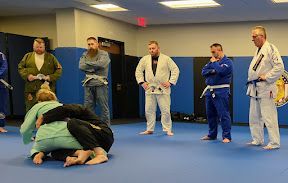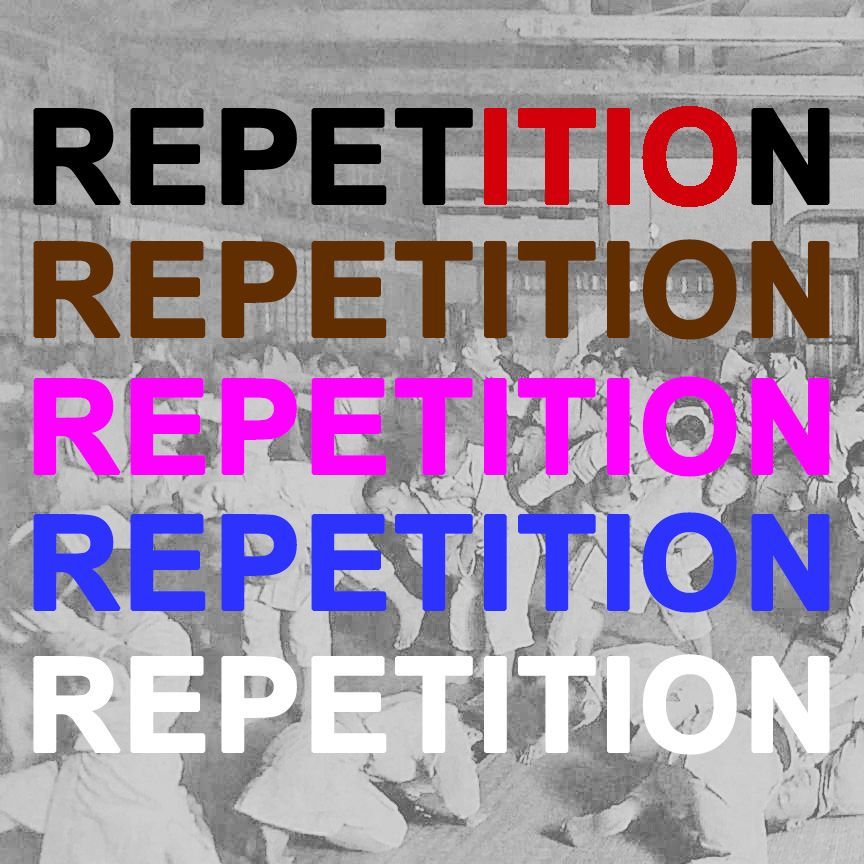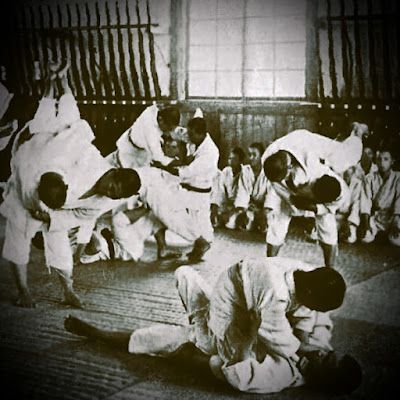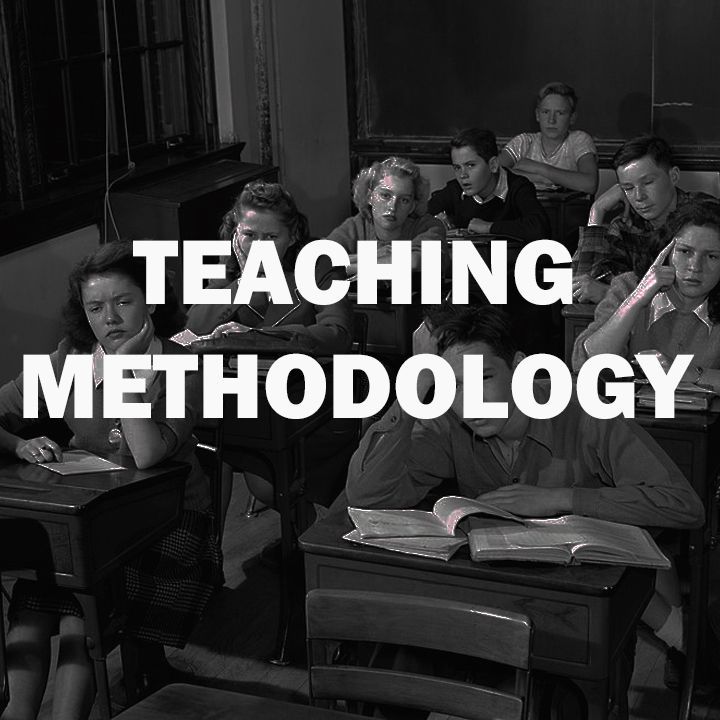Your First Jiu-Jitsu Class
noreply • February 16, 2024
Attire
If this is your first class, it's unlikely you have the training apparel unique to jiu-jitsu such as rash guards, spats, or a gi. It's all good; you can wear gym clothes. Contrary to the ridiculous things seen on the Internet, plan to wear a shirt with sleeves or rash guard at all times that fully covers the shoulders to the waistline. This standard applies to both men and women.
Men
: Wear gym attire. A T-shirt and shorts are fine. Wear either short or long sleeves, but no tank tops. If wearing shorts, do an L-sit by laying on your back with your legs extended upwards, making an L with your body. If your shorts fall down enough to expose things you prefer to remain covered, wear mid-thigh briefs underneath. Some prefer to wear cups/groin protection, but that is totally up to you.
Women
: Wear gym attire sufficiently covering the groin and chest. Sports bras are strongly recommended but not required. Many prefer yoga pants and a t-shirt. Wear either short or long sleeves, but no tank tops or low-cut necks. If wearing shorts, do an L-sit by laying on your back with your legs extended upwards, making an L with your body. If your shorts fall down enough to expose things you prefer to remain covered, wear mid-thigh briefs or yoga pants underneath your shorts.
Shoes are not to be worn on the mat. This is to keep the mats sterile. Training barefoot is preferred but socks are also appropriate.
Introduce yourself to the instructor and prepare to sign a waiver. Offer to pay the drop-in fee or ask to begin a free trial if one is advertised. If needed, use the restroom one final time prior to removing your shoes. Observe other students as they step onto the mats. Did they bow? If so, follow their lead and bow. If not, just step on the mat. Did we mention to never step onto the mat with your shoes on? Yeah, that's an important rule for student safety because shoes transfer fungi, viruses, and bacteria onto the mats - the same mats that will have bare skin touching them during class.
Once on the mat, begin stretching. Some schools will begin class with a warm-up, others don't. It's best practice to stretch and warm yourself up, just in case. If you're feeling social, this is the appropriate time to introduce yourself to nearby students.
Preparation
Drink plenty of water and plan to arrive early. Make sure your body and your clothes are freshly cleaned. Many prefer to shower before class while others just wipe their feet off and wash their hands. Many also prefer to brush their teeth, rinse with mouthwash, or use a breath freshener before class.Upon Arrival
When you arrive, take a breath and "check your ego" to ensure you have the best class experience. This phrase is used to describe the process of acknowledging that you will have very little skill at the beginning stage of jiu-jitsu, arriving with no expectations of your performance, accepting that jiu-jitsu takes many years to master, and understanding that those students with only a few months of training will be considerably better than you.Introduce yourself to the instructor and prepare to sign a waiver. Offer to pay the drop-in fee or ask to begin a free trial if one is advertised. If needed, use the restroom one final time prior to removing your shoes. Observe other students as they step onto the mats. Did they bow? If so, follow their lead and bow. If not, just step on the mat. Did we mention to never step onto the mat with your shoes on? Yeah, that's an important rule for student safety because shoes transfer fungi, viruses, and bacteria onto the mats - the same mats that will have bare skin touching them during class.
Once on the mat, begin stretching. Some schools will begin class with a warm-up, others don't. It's best practice to stretch and warm yourself up, just in case. If you're feeling social, this is the appropriate time to introduce yourself to nearby students.
Beginning Class
Many classes begin with a "line-up" by forming a line of students in order of rank. Observe which end of the line the white belts move toward and stand at the very end of that side of the line. If nobody is wearing a gi, no biggie, the best guess is to stand on the far right of the line as you face the line-up.
Most classes involve two components: a lesson and sparring. Some classes have a warm-up, some have drilling, and some will partner you up immediately for an activity. Regardless, just follow the lead of everyone in the room. If you're partnering, don't be surprised if you're not selected. This isn't high school and nobody is judging you. Jiu-jitsu can be familial at best, tribal at worst, so many partner with those most familiar to them. Someone will pick you up. Just be patient.
When it's time to roll, it is recommended that you observe; however, if you want the full experience, jump in. It is proper etiquette to ask a higher-ranking belt if they would like to roll, and since everyone outranks you on day one, find a belt that has color on it (not black) and ask them to "work with you." Rolling is the jiu-jitsu version of sparring, an activity wherein each partner is trying to defeat the other. These can be spirited tests of a student's technique. You have no experience, so asking a partner to "work with you" is much more disarming and may lead to your partner teaching you even more techniques. Begin and end every rolling session with a handshake or "high five" to show respect and signify the beginning and end of the roll, accompanied by an expression of verbal gratitude.
Most classes involve two components: a lesson and sparring. Some classes have a warm-up, some have drilling, and some will partner you up immediately for an activity. Regardless, just follow the lead of everyone in the room. If you're partnering, don't be surprised if you're not selected. This isn't high school and nobody is judging you. Jiu-jitsu can be familial at best, tribal at worst, so many partner with those most familiar to them. Someone will pick you up. Just be patient.
During Class
The lesson is the part of class when the coach or professor teaches a technique. Be attentive and quiet during the lesson. Stand up and position yourself where you can see the essential details of the technique being taught. After being taught a technique and allowed to practice it on your own, do your best to replicate the technique with your partner, but don't be discouraged if you make mistakes. Corrections will be made by coaches soon enough. When corrected, thank the coach for the correction and implement their advice. When a student is performing the technique on you, don't resist. You need to allow them to succeed so they can learn. On the other hand, don't be a "wet noodle," floppy and limp, because that also makes it difficult for your partner to practice a technique. This is a skill in itself, so in the meantime, ask your partner if you're giving the "right energy." They'll tell you.When it's time to roll, it is recommended that you observe; however, if you want the full experience, jump in. It is proper etiquette to ask a higher-ranking belt if they would like to roll, and since everyone outranks you on day one, find a belt that has color on it (not black) and ask them to "work with you." Rolling is the jiu-jitsu version of sparring, an activity wherein each partner is trying to defeat the other. These can be spirited tests of a student's technique. You have no experience, so asking a partner to "work with you" is much more disarming and may lead to your partner teaching you even more techniques. Begin and end every rolling session with a handshake or "high five" to show respect and signify the beginning and end of the roll, accompanied by an expression of verbal gratitude.
After Class
Many classes that begin with a line-up will end in similar fashion. After class, thank the coach and any partners who worked with you. If you have questions about the class, now is the time to ask....And that's it
You completed your first jiu-jitsu class. At the Hangout Jiu-Jitsu Club, we recommend anyone beginning jiu-jitsu to attend a minimum of four classes before making any judgments on jiu-jitsu, either good or bad, so the student can make an educated decision on their continued involvement.
You might also like
More Posts
Book a Service Today
Thank you for contacting us.
We will get back to you as soon as possible
We will get back to you as soon as possible
Oops, there was an error sending your message.
Please try again later
Please try again later
Get in Touch
We are available via email or telephone
© 2025
All Rights Reserved | 111 Project | Website by ReDoSites




